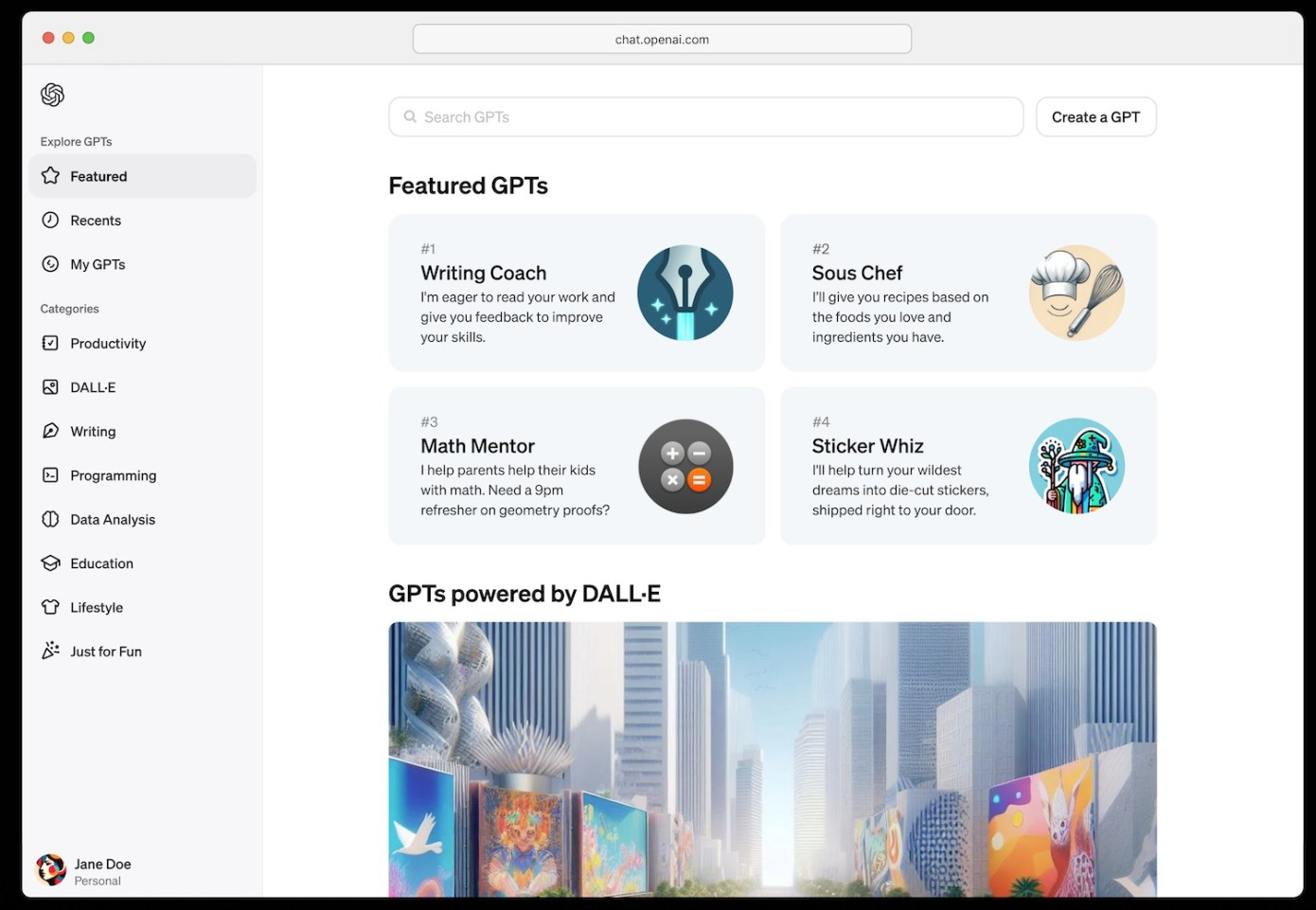The GPT Store is a new marketplace launched by OpenAI where creators can share and monetize their custom-built GPT models. These models are essentially variations of ChatGPT, trained on specific datasets or focused on particular tasks. Think of them as specialized versions of ChatGPT tailored to specific needs.
Here’s how it works:
- Creators: Build their own GPT models on OpenAI’s platform using their own data and training techniques.
- Store: Upload their models to the GPT Store, set a price, and provide a description and examples of what their model can do.
- Users: Browse the store, discover models that meet their needs, and purchase them for access and use.
The GPT Store opens up a range of possibilities for both creators and users:
- Creators: Can earn money from their work and gain recognition for their expertise in building custom GPT models.
- Users: Can find specialized GPT models that handle specific tasks more effectively than the general ChatGPT, potentially saving time and effort.
Here are some potential examples of applications for GPT models in the store:
- Personalized writing assistants: Models trained on your own writing style and preferences.
- Code generators: Models specific to programming languages and frameworks.
- Marketing copywriters: Models skilled at creating targeted ad copy or product descriptions.
- Customer service chatbots: Models trained on your company’s data to answer customer questions accurately.
However, it’s important to note that the GPT Store is still in its early stages. The availability of models and their quality may vary, and users need to be cautious about potential biases or limitations in the models they choose.
Overall, the GPT Store is an exciting development with the potential to democratize access to custom GPT models and unlock new possibilities for creative and productive applications.
I hope this explanation helps! Let me know if you have any further questions about the GPT Store or specific types of models you might be interested in.









